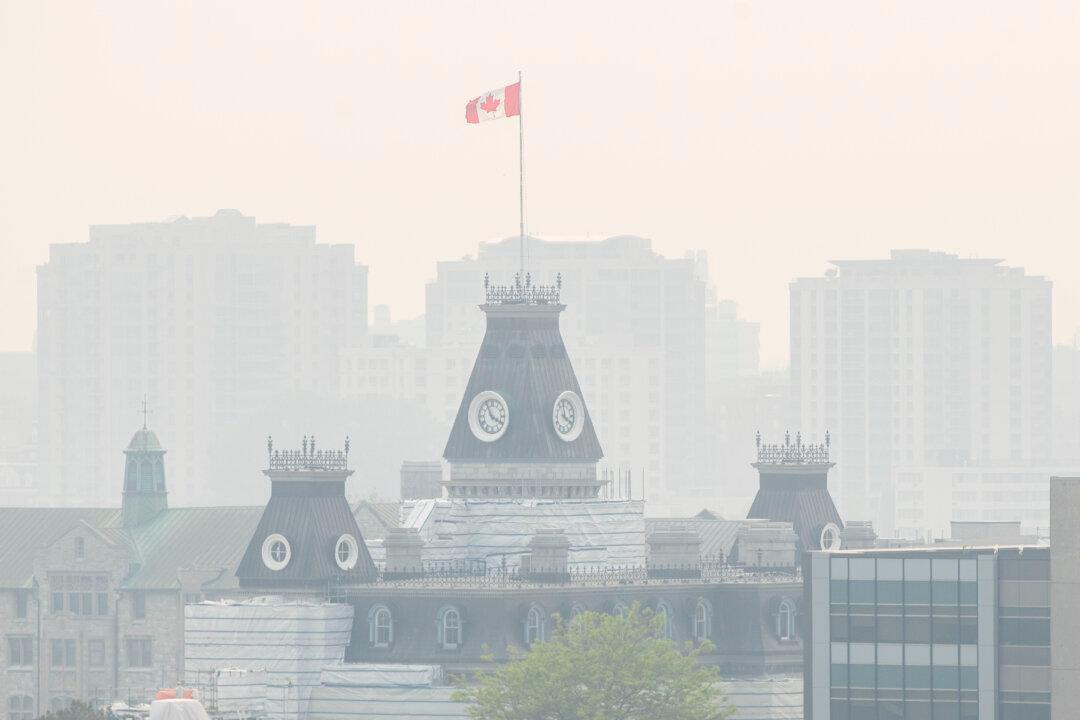In a top 100 ranking of poor air quality and pollution in cities around the world, Toronto ranked sixth place for unhealthy air Wednesday.
The IQ Air Quality Index produces a daily live, major city ranking, and on June 28 at 7 p.m. ET, Toronto took one of the top spots on the list, with smoke from forest fires in parts of northeastern Ontario and Quebec hanging over the city.





